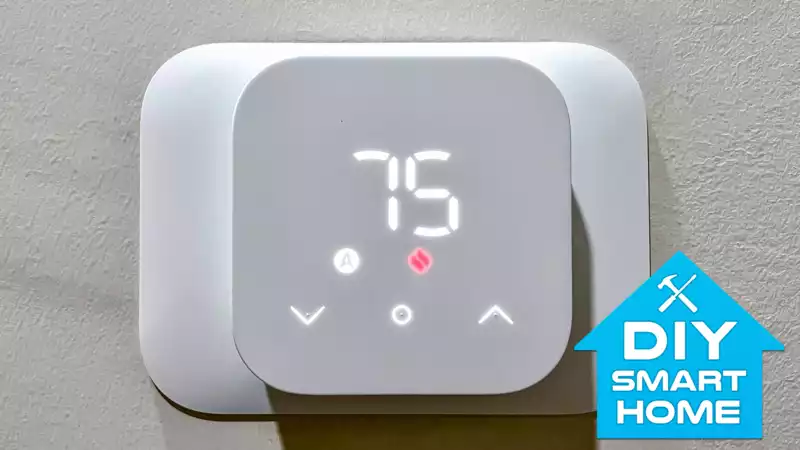Buy a smart thermostat. If you are installing a smart thermostat yourself, it is important that you have a C-Wire in your home; as we learned in our Amazon Smart Thermostat review, if you do not have a C-Wire, you will need to purchase a separate adapter to see if it will work in your DIY smart home Need to.
So what is a C-Wire, how can you tell if you have a C-Wire, and what should you do if you don't have a C-Wire?
C-Wire stands for "common wire" and is the wire that provides continuous power from the HVAC system to the thermostat. Smart thermostats and Wi-Fi enabled thermostats require a C-Wire connection.
The LED display and integrated smart home features of modern smart thermostats require that the device be constantly supplied with some power. Even when the thermostat is not actively pushing the HVAC system to heat or cool the home, it needs power to stay connected to Wi-Fi and to respond to commands from other smart home devices or smart assistants like Alexa.
Some, like the Nest Learning Thermostat, are IFTTT (If This Then That) compatible, which means that the thermostat's settings are also automatically adjusted by pre-set environmental triggers and actions from other smart home devices.
When I took the Wiring 101 course to learn about neutral wiring in order to install the Brilliant smart home controller, the C-wire was not mentioned because the C-wire is dedicated to the thermostat. Unlike other circuits in the home, the power supplied to the thermostat is (for the most part) much lower voltage.
Depending on the complexity of your home's HVAC system, there is a terminal for the C-Wire (in most cases, the proper label is "C") in the alphabet soup on the back of the thermostat faceplate To check if you have a C-Wire, Remove the thermostat from the wall to expose the wires. You should see several wires connected to the labeled terminals. In most cases, the C-Wire is blue, as was the case with my thermostat.
This is what my old Honeywell Home thermostat looked like before I installed the Amazon Smart Thermostat; the label on the C terminal is hidden by the blue wire (this is my C-wire), but it is there.
It is also possible that the C wire is there but not connected to the current thermostat. You may notice an extra wire being pushed back into the wall. Turn off power to the system from the breaker box before touching the wires.
If you still do not see a C wire at the thermostat, check the HVAC control board. Among the other corresponding terminals seen on the thermostat, there should be a C terminal; if a wire is connected to the C terminal, compare the color of that wire to the wire currently connected to the thermostat. One of the wires may be incorrect.
If there is no C wire attached to the HVAC control board, it means there is no C wire. Does this mean you cannot install a smart thermostat?
As mentioned, there is a C-Wire adapter; Amazon Smart Thermostat even offers a bundle with the Honeywell Home C-Wire power adapter, and I have it for $59 to operate a new thermostat I called to see if it was a practical solution for those in need; the Ecobee Smart Thermostat also offers an "add wires" kit.
The adapter kit is the best solution for adding C-wires to HVAC systems and thermostats. The adapter attaches to the control panel of the HVAC system. It is not a difficult addition if you can follow the wiring diagram and are patient enough to accept the DIY nature of enhancing the IQ of your home.
Nevertheless, if you have doubts about what you are doing and do not want to risk damaging your expensive HVAC system, contact an electrician or HVAC professional. For example, the advantages of using smart switches over smart lights. Just because you want to do it yourself doesn't mean you have to solve it yourself - especially not at the risk of personal safety or equipment damage.
.









Comments